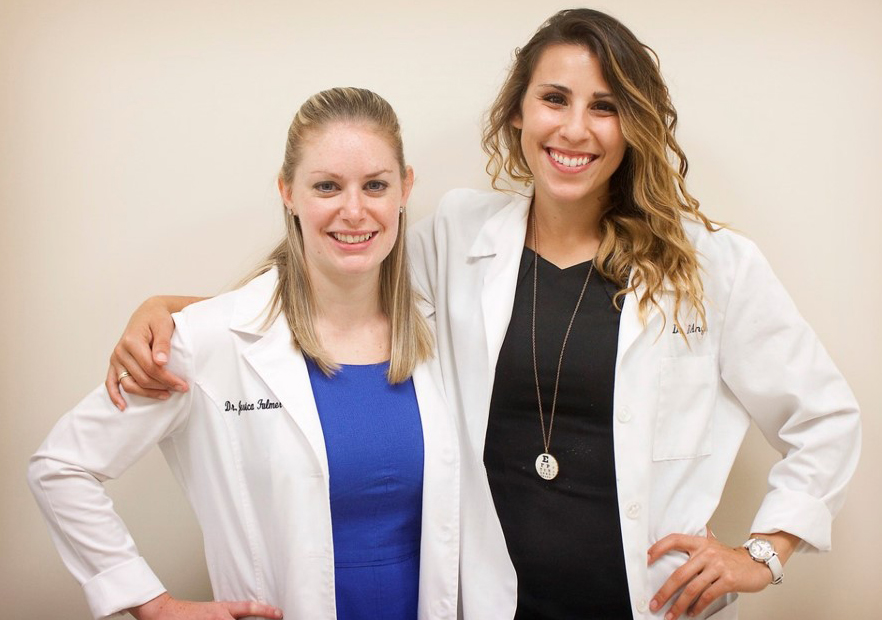By Miki Lyn Zilnicki, OD, FCOVD,
and Jessica Licausi, OD, FAAO, FCOVD

Sept. 16, 2020
It’s been a hard year both emotionally and financially, but that’s no reason it can’t end profitably. Here are the strategies we are employing to make sure our practice is financially sound and growing again by the New Year.
We closed our office March 16 and reopened May 26. Compared to that date range from 2019, we took in 78 percent less revenue (a difference of $69,000).
Although we have been open since the end of May, August was our first profitable month back in the office because we reduced scheduling to limit the amount of people in the office to follow social distancing protocols and to ensure our patients feel safe. Typically, our vision therapy-focused practice would have one doctor and two vision therapist schedules running concurrently, but we now have only two schedules going (one doctor/one therapist) at the same time.
Before Implementing Business-Building Strategies We Reduced Expenses
We think it is important to mention that the pandemic forced us to go through our financials tooth and nail and eliminate as many expenses as possible. Our largest expense, payroll, has also been cut because we have eliminated two part-time staff positions (pre-tester and biller) and have limited hours for our additional staff members to ensure that all schedules are maximized before adding additional hours to try and offset this loss. We have also reduced monthly subscriptions to magazines, stopped offering snacks to patients and were able to pause some monthly expenses (water delivery, garbage and other services) during the pandemic. These small changes have helped to reduce our monthly costs, and when combined with efficient scheduling to maximize patient profits, we project that the gap in revenue will fully be made up by the end of the year.
Here are three strategies that are helping us get back into good financial shape:
Maximizing Schedules
To accommodate COVID-19 precautions, we have had to make many modifications to our schedule to allow for limited patient-to-patient contact and allow for proper disinfection protocols. This means fewer patient slots available than we could previously offer, making the patient’s time in our office extremely valuable. We have implemented a few techniques to maximize our patients’ time.
Other Articles to Explore
The first way we maximize their time is by eliminating paperwork filled out in-person. This has saved a TON of time. We now provide all of our paperwork electronically via a system called IntakeQ. When a patient calls to schedule an appointment, they provide their e-mail address and the appropriate paperwork is e-mailed to them. On our end, we can view when the patient has started filling out paperwork, when it is completed and can then upload the files directly into their EHR file.
Another technique we implemented to maximize the patient’s time is to utilize telemedicine care to take case histories. Case history is such an important part of each exam, particularly for new patients, but can be very time consuming. To tackle this we began scheduling telemedicine phone visits with patients prior to their appointments. This allows us to gather all of our medical, ocular and quality-of-life information before we see the patient.
Editors’ note: If you are billing a medical exam, be careful to follow Medicare’s rules exactly for taking a medical history – especially what parts the doctor has to do.
The secondary benefit of this is that we already know a lot about the patient when they are in our chair for their appointment. This has allowed us to significantly streamline exams and select the most pertinent testing for that patient. This enables quicker, more efficient exams. It is helping us catch up on revenue since we can get patients in sooner for exams and schedule more patients in a day. We love the way these techniques have changed our office flow, and definitely plan to continue using them beyond the pandemic.
As noted, COVID-19 forced us to look at places where our business was running inefficiently. There were times when our vision therapists’ schedules were not filled, so we have made the decision to judicially bring them back on a part-time basis and are slowly adding in additional days to ensure their schedules are full, thereby increasing revenue, but reducing our overhead in payroll.
When setting up your scheduling, figure out how to maximize your doctors’ time. Grouping certain types of exams together helps to increase efficiency. For example, in our office, we found that it makes sense for the doctor to stay in a flow of exams versus exam/therapy/exam. For those practices that are more medical eyecare-based, it may be beneficial to have a “medical testing morning” in which you can stack patients getting OCTs/visual field exams and quick checks by the doctors versus having those activities jammed between comprehensive exam slots.
Quality Over Quantity
With the necessary spreading out of patients it can be hard to see the quantity of patients in a day that we did pre-pandemic. We typically had three schedules running simultaneously, which is not possible to maintain currently in our office space. To make up for these decreased patient numbers we are taking this opportunity to refocus on the quality of care that we are providing. It is important to note that “quality over quantity” has been our philosophy even before the pandemic, but the pandemic has solidified why we chose to practice this way. We do not take many insurances, and only participate with one vision plan that makes up maybe 3 percent of our overall practice. By limiting insurances we get to dictate our time and fees. What we charge for one thorough vision evaluation that takes 1.5 hours is equal to having to see 10 vision plan patients in that same period of time.
You cannot give patients the same quality of care if you are rushing to see as many patients as possible, and patients can feel that. Slowing down, getting to know your patient’s needs, explaining what you’re doing, and what your findings are, builds patient confidence and rapport. They’ll send all their friends to the eye doctor who was thorough and thoughtful–and that is the way to build a sustainable practice.
Our entire staff have been working on our communication with patients, from us as providers down to our receptionist. With the use of personal protective equipment (PPE), such as masks and safety goggles, it can be more difficult to come across as friendly as we usually do with the cue of facial expressions taken away. We strive to convey our friendliness and warmth from the get-go over the phone when the patient is making that initial contact with our office. This carries through to any additional phone or e-mail communication and to the patient’s office visit. We frequently offer a follow-up phone call or e-mail after patients’ appointments to further discuss exam findings and management plans. We have found this to work well as an option, as extended in-person communication can be difficult through PPE and with the time constraints of the schedule.
To achieve quality over quantity, we recommend finding a niche(s) you love within optometry and becoming the expert. Provide superb care and patients will seek you out. Also, drop some of those vision plans. We guarantee that not one optometrist who dropped a poorly reimbursing vision plan has any regrets!
Fostering Relationships with Patients
Communication is key when fostering relationships with patients. As an office our goal is to communicate in a clear, thorough and friendly manner with our patients. From the very beginning of scheduling appointments, our receptionist clearly lays out the process ahead. She explains our new paperwork process and also what safety protocols to expect when the patient arrives for their appointment. We find this time spent on the front end makes our patients feel comfortable and welcomed before they even arrive.
It also helps circumvent any surprises to the patient on the day of their appointment. This communication carries through the exam when we thoroughly explain what we are checking for and then fully review all exam findings. To help supplement this patient education we frequently provide written reports to the patient and offer post-examination phone calls to review findings. We find going this extra step has patients returning to us over and over again because they feel so involved in their care.
Beyond this in-office communication, we also engage with our patient base via our monthly Viewsletter, our social media channels and our podcast “Vision is More than 20/20.” During the pandemic we worked hard to stay even more connected with our patients, share our knowledge and show them that we are dedicated doctors who want to educate and treat our community. We have not done any formal advertising other than a few Facebook ads here and there in about two years, but our practice continues to grow.
Don’t be afraid to put yourself out there. Connecting with the community, letting them get to know you as people and sharing your knowledge is critical in building a sustainable practice.
 Miki Lyn Zilnicki, OD, FCOVD, and Jessica
Miki Lyn Zilnicki, OD, FCOVD, and Jessica
Licausi, OD, FAAO, FCOVD, are co-owners of Twin Forks Optometry and Vision Therapy in Riverhead, NY.
To contact Dr. Zilnicki: DrZilnicki@twinforksoptometry.com.
To contact Dr. Licausi: DrLicausi@twinforksoptometry.com

























